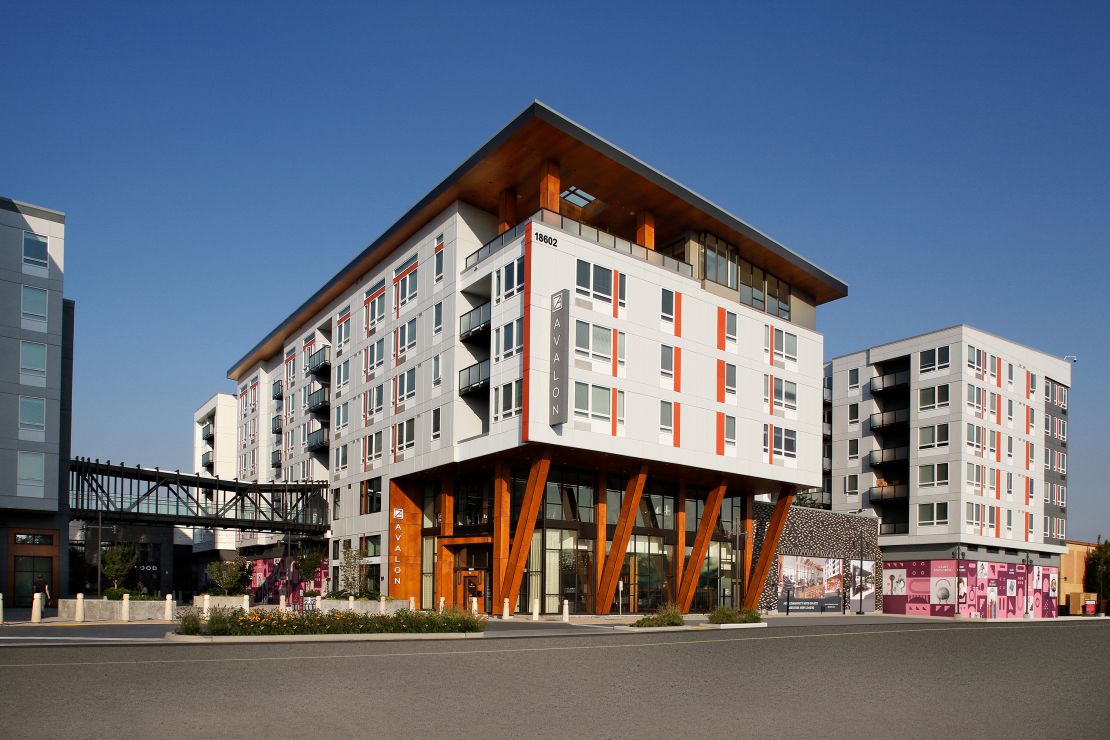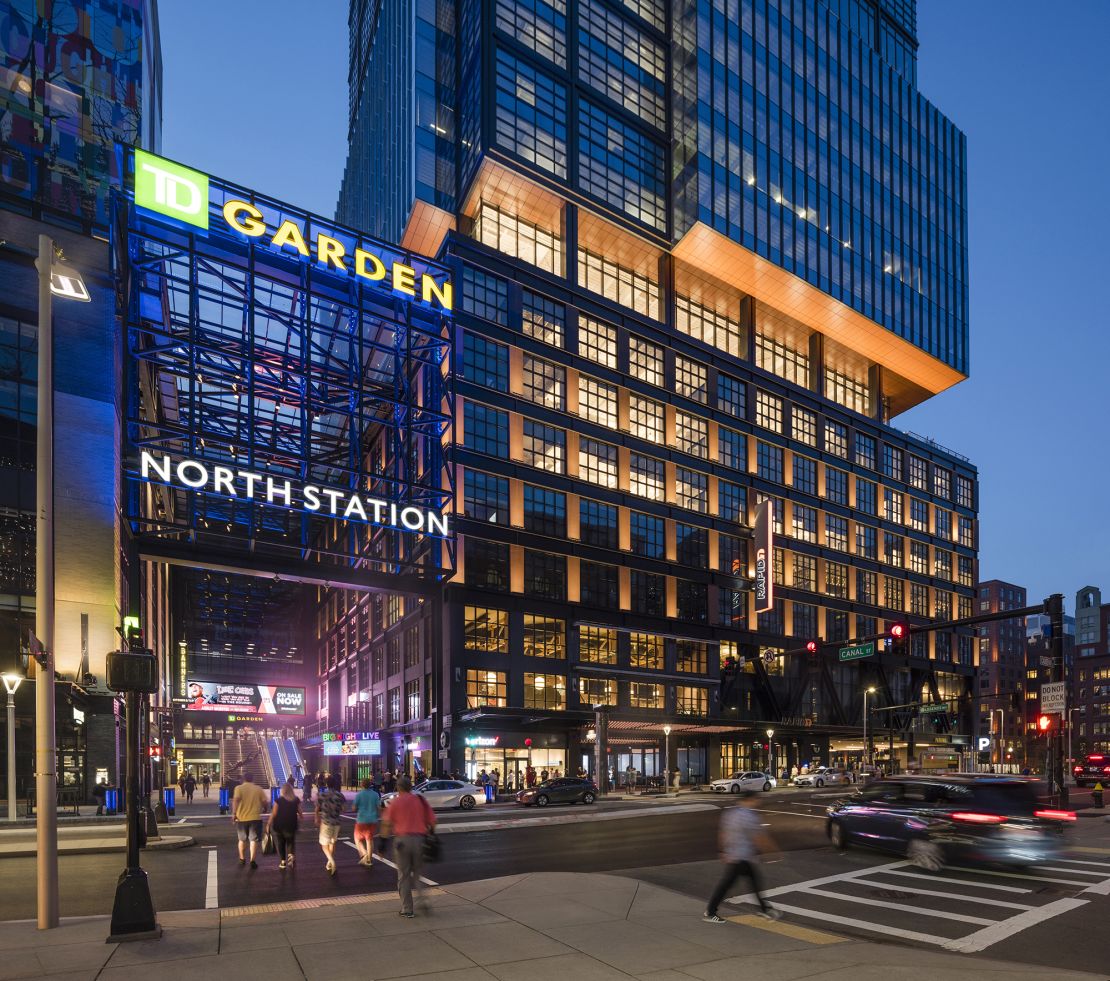CNN
—
American malls were never dead. The decades-old design just needed to be revisited.
Malls were once home to major department stores, until the convenience of e-commerce drew shoppers away and led to closures. But consumers are most enticed by value and the immediate reward of shopping, prompting some developers to completely revamp the retail experience. They’re reconfiguring malls so consumers can live within steps of their favorite shopping or dining spots.
The “live, work, play” mixed-use model — which combines apartment units, fitness clubs, hotels, medical centers, office units, restaurants and retail — offers an alternative to classic shopping centers, according to Ray Wimer, a professor of retail practice at Syracuse University.
“It’s not just retail. It’s bringing in entertainment venues, lots of restaurants and apartments or condos to engage with a younger consumer,” said Wimer.
Less than 30% of malls are “A-level,” meaning they complete more than 400 sales per square foot, Wimer estimated. Those malls are doing fine, he said, but others are looking to reinvent themselves. Some have made a comeback from the Covid-19 pandemic.
The new mixed-use developments are a far cry from the standard windowless malls that took shape in the 1970s. Mixed-use malls retain an assortment of retail stores and dining options, but those traditional mall staples now share space with bank branches, blood centers, police stations, tax preparation services and even residences.
About 46% of mall redevelopments are mixed-use, according to a 2023 analysis by real estate services giant Jones Lang LaSalle (JLL). Malls traditionally have “anchors” — often giant department stores like Sears and Macy’s — boosting foot traffic to help smaller businesses generate sales. Now, about 30% of mall anchor redevelopments are residential and almost 54% of mixed-use redevelopments incorporate housing, according to JLL.
Apartments and condos in malls attract young professionals and empty nesters, according to Josh Schrier, executive vice president and chief investment officer at Pennsylvania Real Estate Investment Trust (PREIT), which emerged from bankruptcy in April 2024 and is now developing about 2,000 housing units for mixed-use projects in Philadelphia and Washington, DC.
“It’s certainly bringing that younger cohort to these properties. They’re looking for community, a place to gather and fun things to do,” Schrier said.
That’s why determining appealing retail and merchandise is important to the mixed-use model, explained Joe Aristone, executive vice president and chief revenue officer at PREIT.
One of the core pairings for mixed-use malls is apartment buildings with medical facilities.
In south New Jersey, Cooper University Health Care renovated a former Sears in PREIT’s Moorestown Mall into a three-story outpatient center that opened in 2023. In addition to the mall’s retail options, a 375-unit apartment building will begin construction this year.
A similar mall is being developed in Seattle, where Virginia Mason Franciscan Health’s Medical Pavilion is a part of the Northgate Station mall, according to its owner, Simon Property Group, with plans to open a 234-unit multifamily building in 2026.
Open-air shopping centers are another popular choice. Macerich’s FlatIron Crossing mall in Colorado has plans for the HiFi — a neighborhood hub with dining, retail and entertainment space alongside a five-story residential community. It’s expected to begin some openings in 2026, according to its website.
Former department stores have also been converted into housing.
AvalonBay Communities, a real estate investment trust, owns 15 communities in such mixed-use districts — and opened Avalon Alderwood Place inside of a mall in the Seattle suburb of Lynnwood.

The cost of a luxury apartment at the mall ranges from $1,860 for a studio to at least $3,885 for a three-bedroom, according to AvalonBay’s website.
“What we see across these communities is a demographic that is seeking walkable, urban-esque living, with amenities at their doorstep,” said Katie Bucklew, vice president of mixed-use and development at AvalonBay.
For some renters, such a lifestyle can be both eco-friendly and practical.
“With mixed-use, you can get rid of cars altogether and make it a place for walking, biking and public transit,” said Shlomo Angel, professor of city planning at New York University.
The original mall concept resembled mixed-use centers, with plans for post offices, libraries and other services, said David Glover, global mixed-use leader at Gensler, an architecture and design firm. Moving in retailers was ultimately more profitable, he said.
“These places that used to be siloed as just going to purchase something now have to become part of that new mindset that we live, live, live,” said Glover.
While adding living and working spaces increases foot traffic, there also needs to be increased “dwell time,” or the length of time of a consumer’s visit, according to PREIT’s Aristone.
That can be resolved by adding restaurants or hosting brand pop-ups for engagement.
Malls are also appealing to Gen Z, who are looking for more “fun,” according to a National Retail Federation report. That means focusing on beauty and athleisure stores like Lululemon, said Stephen Lebovitz, CEO of CBL Properties, which has 55 malls and outlets in its portfolio. Six of those include multi-family housing that will total more than 1,500 units, Lebovitz said.
“The beauty of malls is that they have really strong locations and they have established traffic networks, and infrastructure and critical mass around them,” Lebovitz said.

Community pushback and other factors
The main argument against mixed-use developments tends to be increased traffic congestion, according to Richard Peiser, a professor of real estate development at Harvard Graduate School of Design.
Existing communities can also be resistant to more people moving into or working closer to suburban areas, said NYU’s Angel.
Sewer systems, educational systems and other infrastructure need to be factored for communities before developing mixed-use, said Vanessa L. Deane, an assistant clinical professor and director of urban planning at New York University. But Deane also noted the benefit of mixed-use developments in reducing a community’s carbon footprint.
“With any development, you have to think of the impact on surrounding land uses,” Deane added. “If the existing infrastructure can’t support the project, there could be a problem.”
And those considering renting an apartment in a mixed-use mall might want to weigh the drawbacks.
The high volume of people can mean limited privacy, as well as walking and parking congestion. There could also be a lack of natural light and outdoor options. Some units are smaller because residents use amenities throughout the building, PREIT’s Schrier said, which can be more affordable. Micro-units may lack kitchen amenities like ovens and stoves, or cleaning appliances like dishwashers, washers and dryers.













